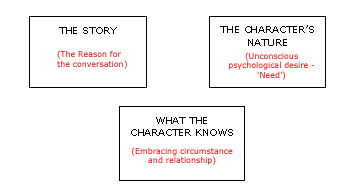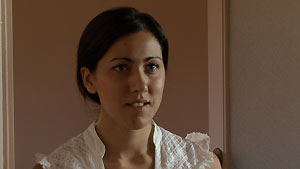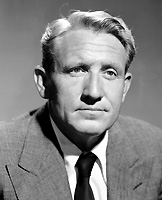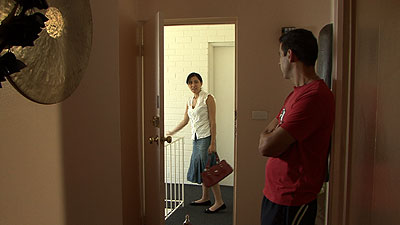![]()
ACTING PROCESS
A Summary of Rehearsal Room Process
(devised by Richard Sarell)
September 2011
The following notes were created in May 2003, then updated in January 2007, April 2009, November 2010 and again in September 2011. These additions bring a clearer explanation and exciting new elements to the process.
In 1993 John Higginson, who now teaches the Voice Over course at the Rehearsal Room, asked me to teach my approach to performance to a group of actors. John’s view was that many currently taught acting processes had passed their use-by-date. He had observed that I was doing something different and wanted to learn about it. Although I had been sporadically teaching at TAFE and privately run organisations, John’s group was the beginning of what is now known as The Rehearsal Room.
This view of process had originally developed as a result of an Actor/Director workshop run by a beautiful man and a great teacher at ABC-TV in Melbourne in 1985. New Zealander, MURRAY HUTCHINSON explained basic principles of the Stanislavski process in such a simple way that it immediately made sense. At that point I’d read “The Actor Prepares” twice. I had been thoroughly inspired by Stanislavski’s work and equally confused by it.
I now understand that many actors who have had tertiary training in the Stanislavski method are also thoroughly confused by it. They frequently don’t understand the reasons for particular practices and they don’t understand them because they haven’t been explained in a way that makes sense. I believe that the teachers who have been providing this tertiary training don’t understand the practicalities of acting process either. They merely pass on the confusions they’ve been taught. |
|
|
GLENN QUINN came to The Rehearsal Room after completing a tertiary degree in music theatre. At the time he was in the chorus of Mama Mia. One night after he had been taking classes for a little while he suddenly said, “I get it!! What I have to do is, at the beginning of the scene, put myself in the same position that the character is in so that I can go on and make his decisions for him.” His reference to ‘the same position’ meant … in the same circumstances and relationships with the same goals as the character. Glenn’s elegant statement encapsulates the most important elements of the acting process in a remarkably simple way. Making the character's next decision is THE MOST IMPORTANT THING AN ACTOR CAN EVER DO.
Since then Glenn has gone on to play the lead in ‘Jersey Boys’ three hundred times.
The Rehearsal Room focuses on a number of effective tools that enable the actor to achieve Glenn's stated goal. It is an organic process that is constantly in development. It grows because of the interactive nature of the workshop sessions where there is a constant flow of ideas within the group. The on-going Rehearsal Room aim is to find simple, clear and functional ways to make our acting process more interactive, manageable and real. |
What follows are the basic principles explored in current Rehearsal Room workshops.
Actor Responsibilities
The actor in the view of The Rehearsal Room has two main tasks -
• The first one is to ‘tell the story’ – this is the reason the production is happening in the first place.
• The second task for the actor is ‘to be believable’ (while they deliver the story).
Managing the Choices
To achieve these goals the actor needs to able to efficiently manage THREE specific areas. Managing these areas entails being able to make quick choices, commit to them effectively and also be able to change them significantly from take to take.
Once acquired these skills are not difficult to manipulate. The three areas are …
 |
There’s more detail on these concepts in “Are You Ready To Go?” http://www.rehearsalroom.com/directornotes/ardnareureadytogo.html
Telling
the Story
If the story is clearly identified or labelled then generally the performance
will unfold in a way that allows the story to be clearly told. The value
of ‘simple’ and ‘active’ labelling is the wonderful
and functional gift that Constantine Stanislavski gave the acting world.
It is an enormously powerful tool that is often misunderstood and frequently
over complicated. When identifying the story content of a scene the main
elements to identify are …
• the beginning,
• the middle
• and the end.OR
• action,
• reaction
• and outcome.
On some occasions a fourth element is present – the turning point. The story structure will then unfold as - beginning, middle, turning point and end.
Turning
Point
A turning point is the moment when a clear change in direction of the
conversation occurs. Under these circumstances there will now be a new
reason driving the conversation. If the story or conversation doesn’t
head in a new direction it isn’t a turning point.
Identifying
Story
Remember, when it comes to identifying the story of a scene that the real
story is always about ‘what transpires between the characters
in the scene’. Often, this has little
to do with what is being said.
 |
NOTE:
The dialogue itself may not be what the story is about. The
dialogue is mostly just the content of the conversation. |
It is also true that often the story of the scene only has a little to do with what has happened to characters in the past, or what might happen to them in the future. It is mostly about what is happening to them now.
An important part of The Rehearsal Room process is to identify the story. One important value of clearly identifying the essence of the ‘text’ is that the actor can then be clear about any choices required to manage the ‘sub-text’. Here again there is much confusion in the acting world about what the definition of sub-text and text should be.
 |
RR DEFINITION: The Rehearsal Room definition of text is – 'the dialogue the character HAS to say, the stage directions/big print the character HAS to do and the story the actor has defined (that is unfolding between the characters in the scene while they are saying the dialogue)'. (Sometimes, some of the dialogue & stage directions won’t be essential to the story. They therefore won’t have to be said or done.) |
Rehearsal Room classes constantly demonstrate that clear, simple and active labels of story consistently produce believable performances. Vague labels produce erratic performances and confusing stories.
A
Simple Approach to STORY
Actors, as a group, are not great at identifying story. Actors are particularly
aware of intuitive impulses and therefore they easily perceive the wondrous
complexities of a scene rather than the over-riding simplicity. Both elements
co-exist in a scene but too much pre-occupation with the wondrous complexities
of life tend to generate fuzzy outcomes. Complicated story descriptions are exceedingly hard to translate into
performance. Putting effort into simple story definitions is very worthwhile.
Rehearsal Room actors who become competent at this procedure make instant
quantum leaps forward in their performance capabilities.
Structure of a Conversation
The first thing to consider is that most scenes are a conversation. Conversations have a number of identifiable and simple ingredients. For example, every conversation has an ‘instigator’. A conversation is always started by someone and they start it for a reason. That reason is what drives the conversation forward until they –
# # # |
achieve their desired goal or realize they can’t achieve that goal or give up on achieving that goal for the moment. |
When one of the above points is reached then the conversation ENDS.
ENDINGS
A simple way of thinking about how a conversation ends is that its result will either be a ‘win’, a ‘lose’ or a ‘draw’. This is an overly simplistic way of labelling endings but it is a very useful starting point.
The actor must remain open to the fact that endings can be more complicated than the above.
For example, rather than a character deciding that the outcome was ‘a draw’ they their decision might be that “they’ll leave it for now but think they can win next time.” That ending although more complicated than a simple ‘draw’ is a perfectly functional realisation that a character could easily achieve.
3 Conversations Possibilities
Over the years The Rehearsal Room has continually explored ways of illuminating the reason that drives a conversation. This exploration has evolved into a very simple formula.
It has become plain that, for the person who instigates the conversation, there are only three reasons that motivate it.
In any conversation the instigator is pursuing either a –
# a test # a challenge # or a battle for control. |
In initially exploring this concept at The Rehearsal Room we guessed this proposition would have about an 80% success rate. However after working with this formula for some time we now believe it is much more effective than that. We now treat that formula as 100% effective.
It is a very useful tool.
Could it be too simple?
The elegant simplicity of this idea has proved to be its strength. It is not an over simplification. It is in fact extremely versatile and can produce enormously complex outcomes. The versatility is derived once you add the extra ingredient of asking what issue the conversation process is exploring. Once the actor starts considering that the story could be –
|
then a vast array of options becomes available even though the path to reveal them is a simple one. This simple process empowers actors to effectively understand the real content and structure of a scene very quickly.
One thing is absolutely clear - simple story definitions produce strong performances and complex characters.
This formula emerged from a problem solving session with actor Paul Cousins. It is also enormously effective in the audition room when decisions have to be made really quickly.
BUT this is only half the formula.
|
Instigator and Responder If a conversation always has an ‘instigator’ then it also must have a ‘responder’ or a ‘reactor’. The conversation begins when the instigator sets out to achieve their ‘conversation goal’. The middle of the conversation commences as soon as the ‘responder’ responds. Thereafter these two components continue competing until the conversation reaches its end.
|
If the instigator is pursuing one of the above options (test , challenge or battle for control) then there are only two options for the responding character. They will either be –
- doing the same thing back (i.e. contesting the test, challenge, or battle for control) OR
- they will be resisting, avoiding or denying the test, challenge or battle for control.
Read that again, because it looks a little more complicated on the page than it actually is.
There are in fact only two options – to do the same thing back OR resist, avoid or deny. (This short cut is named the "Kirsty Lee Principle" after the actor who discovered it.) This is also simple and remarkably effective.
Determining an instigator and responder and the conversation path they are following is a very effective and productive way to identify the story content of a scene. It is not an element actors usually bother about labelling but it instantly provides a huge amount of very useful information. Our life experience immediately comes into play for we immediately and intuitively understand the difference between those two roles. It is one of the first conversational rules we learn in life. Did we instigate and control the conversation or did our parents? Watch any interaction with a two-year-old. It becomes plain that these conversation skills are learnt and practiced at a very early stage of our lives.
Two-year-olds spend a lot of time ‘battling to get control back’. |
|
What’s the Difference??
 |
Initially, it might be confusing ascertaining the difference between the three conversation categories of test, challenge or battle for control. Try thinking of it like this.
|
A ‘battle for control’ conversation' (as with a two-year-old) is sometimes plainly obvious. However, this is not always the case. Often in life we disguise that we are battling for control because that makes it easier to achieve our goal. Battles for control can be very skilful manipulations. But whenever a person wants the outcome of a conversation to go their way then they are ‘battling for control’ even though they are going about it ‘helpfully’, ‘sweetly’ or ‘seductively’. Whatever approach they choose to implement their goal it still remains a ‘battle for control’.
These options can be grouped together in a great variety of ways. For example,
“I might be testing you to see if it’s possible to mount a challenge.” “I might be challenging you to test yourself.” “I might be battling to get you to challenge yourself more.” |
NOTE: Any scene can have these options applied to them. The actor is ultimately in total control of the element that’s driving the scene/conversation.
IMPORTANT DOUBLE CHECK:
Once the instigator has made a choice it is important to look at the script to see whether this ‘story definition’ is merely describing what is being spoken about in the scene. Actors don’t need to identify the content of the dialogue. The dialogue is always going to be plainly heard by the audience. When defining the reason for the conversation actors must be labeling “what’s unfolding between the actors in the scene while they are saying the dialogue”. That is the element that is really driving the conversation. It is therefore important to check that the instigator’s ‘purpose for the conversation’ is DIFFERENT FROM the content of the dialogue.
Some actor’s first response is that this approach to identifying the reason and structure of a conversation seems to be too technical; OR on occasions actors will argue “that it can’t be of any use because it is not like life”. My response to both these views is to say – “Go out into the world and watch conversations. When you find one that isn’t structured this way bring it back to me and we’ll discuss it.” Such a discovery would build the next step in further developing The Rehearsal Room process. So far, no-one has returned with a functioning conversation that deviates from this formula. The consensus is that this is the way conversations function in life.
Here is a scene shot in 2011 for The Rehearsal Room feature film ‘Rhyme and Reason’.
In this scene Ally (played by VALERIE DUTHIL) knocks on Jakov’s (played by ANTE KRESO) door. She is the instigator of the conversation. She talks about a number of specific topics but only one single reason drives ALL her conversation choices. Ally is “challenging Jakov to take control of his life". Jakov is “resisting” this challenge. The outcome of this conversation is that they both lose. In simple but VERY ACTIVE terms that is the definition of the conversation. It is …
|
|
NOW HAVE A LOOK AND SEE THE OUTCOME OF APPLYING THIS PROCESS. OBSERVE HOW CLEARLY AND SIMPLY THE ACTORS ARE LISTENING AND RESPONDING. THAT’S BECAUSE THEY UNDERSTAND THE REAL REASON FOR THE CONVERSATION. CLICK HERE TO VIEW THE CLIP
Or you can watch this version with captions that clarify this approach.
This scene was written by Louise Le Nay.
Being
Believable
The simplest
way that the Stanislavski approach to realism can be explained is this
–
“The actor always needs to be doing two things at once.”
Doing two things at once is tricky. The general outcome of such an activity is that we tend to concentrate on one element more than another. The result is that the one we are concentrating on appears to be the character’s conscious thought processes and the less active one appears to be the character’s unconscious thought processes. It is the actor’s ability to ‘appear’ to be functioning on both a conscious and an unconscious level simultaneously that makes the character look real. That is the fundamental trick for creating ‘realism’ in performance.
Once the text has been clearly identified it is then possible to put in place a sub-text. This will bring a layered complexity to the character.
This is also a significant tool for determining and managing the nature of the person who is having the conversation.
Unconscious
Psychological Desire ('Need')
An important instrument that drives active listening and generates a significant
proportion of intuitive impulses is the character’s ‘need’.
This ‘need’ replicates the unconscious
psychological desire of the character – it helps create the
image that the character has both conscious and unconscious thought
processes. It is a foundation element of ‘realism’ in performance.
Other elements such as good levels of relaxation can help create a performance outcome that looks realistic but such devices all have attendant risks. If the actor isn’t relaxed how do they generate believability? What if they are relaxed but the believability isn’t complex enough? What process do they use then?
There are of course a number of options. Directors generally have quite a large number of tricks up their sleeves to assist with these issues. But the creation of a psychological desire or unconscious need for the character is the most functional and reliable approach I know to generate and manage a character’s complexity. It is a major element in producing and controlling a complex and real character. (FOR MORE ON BEING REAL CLICK HERE)
The creation of a psychological desire or unconscious mind for the character is a major element in producing and controlling a complex and real character.
The
“Need”
This labelling of the character’s unconscious desire is The
Rehearsal Room’s way of simplifying an often-confusing task.
“Need” is elsewhere labelled variously an “intention”,
an “action”, an “objective” or the “sub-text”
– but these labels are confusing because universally they don’t
succeed in keeping the elements of conscious and unconscious thought separate.
Actors who use these traditional labels constantly cross over between
conscious and unconscious thought processes without realizing they are
doing so. In that instant they are seen to be 'acting' because in life that separation is largely and consistently maintained.
SPENCER TRACY's reported tip to a young actor, “Never let them catch you acting,” is excellent advice. Always having an unconscious desire or ‘need’ in place for the character is a very effective way of maintaining complexity and NOT BEING CAUGHT OUT ‘ACTING’.
|
 |
If the story provides the text for the scene the character’s unconscious desire provides the sub-text.
The
Steps in the Process
The Rehearsal Room’s view of process, in simplistic
terms is … if the actor is actively listening and responding in
a complex way to the impulses generated by the events of the moment, then
the performance will be believable.
First
Things First
It is important to first identify
the story or text. If the actor doesn’t have a clear view of the
text how can they choose a sub-text that is separate from it? It is important
that the sub-text and text are different. If they are the same then the
actor won’t be doing two things at once. It is important that the sub-text and text be different. If they are the same then the actor wont be doing two things at once. If the actor isn't doing two things at once the chances of being believable DROP DRAMATICALLY.
It is important that the sub-text and text are different. If they are the same then the actor won’t be doing two things at once. If the actor isn’t doing two things at once the chances of being believable DROP DRAMATICALLY.
THE SOLUTION – always have a ‘need’ in place. MAKE IT A HABIT.
Choosing an appropriate and functional method of labeling this ‘need’ is also an important part of The Rehearsal Room process. The most functional labels are the ones that connect most directly to the actor’s own unconscious perceptions. They are the ones that will produce the greatest unconscious responses in the actor.
Selecting
a ‘Need’
When selecting a ‘need’ for a character using Constantine
Stanislavski’s phrase “I wish to ………
you”, as a guide, is a good way of making sure that the choice
is active and simple. Simple choices are best as they are easy to implement.
Easy implementation invites a higher likelihood of a successful outcome.
The ‘need’ must be active - there is no point in picking one if it is inactive, as it won’t do anything.
(There is a list of active verbs on The Rehearsal Room website. It is recommended that actors stick to that list as they are highly active and function easily in an unconscious/sub-conscious way. CLICK HERE FOR A LIST OF ACTIVE LABELS)
Checking
Functionality
When you have selected a need for your character the following check list
will provide guidance as to how functional that choice will be.
If the “need” is ….
|
 |
This is the fundamental tool that enables quick and effective choice of sub-text. It is a uniquely simple identification of all the essential ingredients of Stanislavski process.
Actors should be able to check the list quickly. An actor who can’t check out these fundamental elements in 5 seconds or less will tend not to use this checklist. Failing to use the checklist enormously increases the chance of making an ineffective choice. It is therefore essential to learn this and practice using it. This is only a very small effort to significantly increase the chances of a very useful rehearsal or successful performance.
Beware Perfection
We all desire to be good at what we do and this breeds a pursuit of perfection. Experience at The Rehearsal Room and in life constantly demonstrates that chasing perfection is a destructive waste of time. (Look at the journey NATALIE PORTMAN created for Nina Sayer in “The Black Swan”.) Being able to consistently do the job is a much more worthwhile goal. An actor who can be consistently good (i.e. do the job) will sometimes be brilliant. The actor who constantly strives for brilliance will be terrible more often than they will be good.
So, let’s forget about perfection and make COMPETENCE our goal.
A
Guarantee of Success??
The Rehearsal Room checklist doesn’t guarantee an effective outcome
but it will significantly increase the possibility of one. A successful
outcome hinges on a good balance of acting process and rehearsal process.
Theory will never answer all the questions. That’s why rehearsal
is essential. The value of practical theory is that it –
• makes rehearsals efficient and effective;
• it makes change easy;
• it makes communication simple and clear
• it makes complexity of character and clarity of story readily
achievable.
The
Rehearsal Room checklist works!!! Use it.
A
Little Clarification
The essential concepts relating to “need” are …
| 1. | A “need” is something the actor “knows” rather than “shows”. |
| 2. | It is not important that the actor achieve fulfillment of the character’s “need” but rather that the actor understands how much and why the character wants to have this desire fulfilled. i.e. it is about “wanting” and “needing” not achieving. |
| 3. | An actor must be comfortable about giving himself/herself “permission” to “own” the character’s “need”. |
| 4. | “Need” should always be focused on a person and not an object. |
| 5. | It is many times more functional to have a “need” in place for a character who is in the scene than it is to have a “need” for someone who isn’t in the scene. |
| 6. | If there is more than one other person in the scene then mostly it is best to only have a “need” in place for one of the people in the scene. This is obviously the most important person for your character at this time. (THIS IS NOT ALWAYS THE PERSON WITH WHOM THE CHARACTER IS CONVERSING) |
| 7. | Never have a “need” that is about you. It must always be for someone else. |
“Permission”,
“ownership” and “trust”
are important concepts for an actor to understand.
Out of these ingredients a well-placed confidence can emerge. “Confidence”
is also an important ingredient of performance.
PRIORITIES
It is obviously important that the sub-text verb be separate from the
text. This is one of the cornerstones of character complexity. For this
to be achievable it is essential that the first element an actor should
identify is the STORY. The story is what the director and the producer
have hired the actor to deliver. It is of primary importance. Never underestimate
the importance of the story.
The second step is to select a “NEED” for the character to carry while they experience and deal with the events and difficulties generated by the story.
The third step is to make sure that the circumstances and the relationship are clearly understood.
Surprises
Another foundation element of the performance process is the ability to
play “moments of surprise”. The
Rehearsal Room definition of surprise (based on Stanislavski’s wonderful
concepts) is –
 |
“A surprise is anything that interrupts the character’s need”. |
This means that “need” won't function while the surprise is happening. A new “need” may result from experiencing a major surprise.
Stanislavski says that surprises have four phases –
- the event phase;
- the identification phase;
- the assessment phase - is it 'good for me' or 'bad for me' (which is the moment of fight or flight)
- and the final phase, where the choice to either return to the interrupted “need” is made (this is the most likely of outcomes) or a new “need” is now required.
If a surprise doesn’t have four phases it won’t be real.
Centre of Gravity
The Rehearsal Room believes that all moments of surprise are connected
in some instinctive way to our Centre of Gravity. Centre of Gravity should
be an inherent part of every moment of surprise.
Surprises are of GREAT VALUE for the story. They are also moments of great trust for the actor and moments of great reward for the audience.
Surprises are generated by unexpected difficulties. Difficulty is the most active ingredient that drives story forward. The more surprises in a scene the more difficulties and therefore the more drama.
Any time you are excited by a good dramatic scene it will mostly have a surprise a line for the characters.
Surprises also come out of the character’s conscious expectations being interrupted. Everything we do, whether it is action or conversation based has an expectation attached to it – otherwise we wouldn’t do it. When that expectation isn’t met in someway we are surprised. We are also surprised when our expectations are met.
Helping
Surprises Work
In life the character doesn’t know what is going to happen next
so, they are constantly surprised. However, the actor is in possession
of a lot of information about what the future holds and this provides
a significant challenge for the actor. As soon as the actor knows what
is going to happen the first phase of the next surprise won’t exist.
The first phase is the moment where the character’s expectation
is interrupted and the loss of that interruption tends to reveal the actor
rather than the character. ‘Pre-knowledge’ or ‘anticipation’
is instant death to the believability of any moment of surprise.
COLOURS
Whenever we embark on a course of action in life, whether it be a physical or a conversational/intellectual one we choose to go about it in a variety of ways. We might choose to do this task -
- playfully
- logically
- aggressively
- manipulatively
- flirtatiously
- energetically
- gloomily
- or helpfully. etc
The options are endless. But whatever way we choose to go about it the task itself doesn’t change. The fundamental core issue remains the same. We can go about a conversation in a vast variety of ways but the reason behind the conversation stays the same.
When we change ‘the way we go about’ our conscious thought processes then inevitably at the same time change the way we are pursuing our unconscious processes. But, again the core unconscious ‘need’ will stay the same. It is merely the way we are going about achieving it that has changed.
| The colour is the way that the character goes about pursuing “stuff”. |  |
Colour is the way we go about pursuing anything or any ‘stuff’ we do.
We often use colour to disguise our real processes whether they are unconscious or conscious. We don’t show our unconscious ‘need’ but we DO show colours or we might think about it as ‘wearing them’. They are the conscious way we want to be perceived by the world. Thus they are conscious choices and therefore they are often referred to in text. The writer may have indicated that your character is angry or happy and so you can go about your ‘conversation goal’ or disguise your ‘need’ angrily or happily.
The choice to apply colours is a conscious one. Each morning you get up and choose the clothes you wish to wear for the day. In choosing your clothes you decide how you want the world to see you on this day. The colours we wear are a deliberate choice to control the way the world will perceive us.
Because the choice of colour is a very CONSCIOUS process for the character these decisions are mostly ‘story’ related. For example, a conscious ‘Battle for Control’ could be pursued ‘warmly’ or ‘pleasantly’.
On occasions colour is also a way of disguising our unconscious ‘need’. We could be going about a ‘need to dominate’ helpfully – it’s the ‘helpfully’ that is the conscious way we want to be seen while our ‘to dominate need’ sits in the background (at an unconscious level).
The element I am calling ‘colour’ is much the same, as the Stanislavski purist will call ‘actions’. In their vocabulary actions are the way you go about getting your intention or your objective. In The Rehearsal Room vocabulary it’s the way you pursue or go about getting anything.
The Stanislavski purists label ‘actions’ as verbs. This is highly impractical. As the conscious thought processes are already labeled with a verb its ridiculous to label the way we go about pursuing that verb with another verb. Our brains are simply not trained to work that way. Many many actors have said to me that they could not do this – that it never made sense to them.
If we label our ‘need’ as a verb it seems entirely logical to label the way we go about pursuing it as an adverb or a colour. Adverbs are words that end in the letters ‘ly’.
A Practical Label
Using adverbs (that’s the word that describes how we go about a verb) is very practical as our brain is already trained to understand how the adverb and the verb relate. You can also choose to label them as colours. Some actors like the idea of issuing an ‘orange’ challenge or a ‘bright red’ challenge. But a challenge could just as easily be ‘blue’ or ‘golden’.
Whether you label them with a colour or an adverb you MUST ALLOW THEM TO CHANGE during the scene. The change of hue will result from your listening and the SURPRISES that result. Colours should be changing constantly depending on the interaction. Thus you can choose to put one in place at the start of a scene but you can’t predict the hue it will be by the end of the scene because that will depend on the interaction. It’s your listening to the impulses in the scene that will determine the way you go about your next choice and the colours that result.
A Technical Tool
Sometimes if our ‘need’ is fairly close to the text we may pick a really diverse colour to bring back the complexity.
My standard example is the argument scene that is resulting from a father challenging his son. If the father’s ‘need’ to dominate has always driven this relationship then it should stay set. But because the father’s ‘need’ is close to the ‘challenge story’ then the outcome won’t be very complex. This may not be a problem. Characters don’t always have to be hugely complex – sometimes in a heated argument people aren’t very complex. But if you don’t want the outcome to be so confined, picking a diverse colour such as ‘charmingly’ or ‘intelligently’ or ‘playfully’ will bring the complexity back to the performance. So, the father’s nature or character stays the same (‘need’ - to dominate and unconscious) while he gets on with his conversation goal (challenge - story and conscious), yet does so in a charmingly (colour – the conscious way he is going about the conversation) complex way.
This is traditionally called ‘playing against it’.
We now have story, ‘need’ and colours to deal with in our acting process. And we are always open to moments of surprise determining how the character will make the next decision.
WHAT THE CHARACTER KNOWS
Every decision we make in life is informed and moderated by all the decisions we have previously made to this point. These are the lessons life has taught us. Understanding the things the character knows (that are relevant to the scene) is a hugely important tool for the actor. By changing what the character knows you can change significantly how the character makes the next choice. A character who knows much about the likely positive outcomes of a choice will go about making a decision entirely differently to a character who fears serious negative outcomes.
The way an actor manages these areas has much to do with the way they explore the character’s existing circumstances and relationships. CIRCUMSTANCES and RELATIONSHIP have a HUGE impact on performance choices. The conversation with a lover will be entirely different to exactly the same conversation with a mother in the home or a supervisor in the workplace. Circumstance and relationship need careful monitoring because of the major contribution they make to any decision.
The actor’s task is to maintain a balance between the character’s nature, their reason for the conversation and what the character knows.
AND THE INSTRUMENT THAT DRIVES IT ALL IS - LISTENING. That's the crucial skill that allows characters to freely interact in a believable and spontaneous way.
Rehearsal
Room Fundamentals
These are the fundamentals of Rehearsal Room process. They have evolved
this way because of
- the many years spent observing auditioning actor’s who can do a fantastic job at using emotional memory and getting in touch with their feelings BUT CAN’T DELIVER A BELIEVABLE STORY.
- The Rehearsal Room process developed this way because of years of auditioning so many actors who have done an enormous amount of preparation on the character’s prehistory BUT COULDN’T CHANGE QUICKLY.
- These principles have become a priority because for so many actors careful and intelligent preparation meant that they couldn’t possibly OPENLY LISTEN OR PLAY TRUTHFUL SURPRISES BECAUSE THEY ALWAYS KNEW WHAT THEY WERE GOING TO DO NEXT. SUCH AN APPROACH ALWAYS LOOKS LIKE ‘ACTING’.
As soon as the audience detects any elements of ‘acting’, believability evaporates. Perhaps the label of ‘actor’ is misleading in itself. Maybe we should think of the task as ‘inter-acting’ instead.
Rehearsal Room process is targeted at producing actors who –
- trust themselves to listen openly all the time;
- who genuinely don’t know the future and so always make real choices;
- who keep the audience on the edge of their seats because they consistently play fantastic moments of surprise;
- who can take direction, make big changes and be instantly believable AND …
- who always consistently deliver the story because that’s what they have been hired to do.
THE ABOVE COULD BE EXPLAINED IN EVEN MORE DETAIL AND THERE ARE OF COURSE OTHER IMPORTANT INGREDIENTS. OBVIOUSLY THE CHARACTER’S LIFE EXPERIENCE WILL HAVE A HUGE EFFECT ON ANY CHOICES THE CHARACTER WILL MAKE. SO, CREATING AN ACTIVE PRE-HISTORY FOR A CHARACTER IS A VERY IMPORTANT GOAL.
ACTORS
NEED TO HAVE SOLID FOUNDATIONS TO THEIR PERFORMANCE PROCESS SO THAT
THEY CAN ADD EMBELLISHMENTS. IN REHEARSAL ROOM MASTER CLASSES OTHER ACTIVE PROCESSES ARE USED TO ADD COMPLEXITY TO THESE FUNDAMENTAL PRINCIPLES. THESE TECHNIQUES ARE ALL FOCUSED ON PRODUCING COMPLEX OUTCOMES EFFICIENTLY. |
 |
Finally – relax, trust and enjoy.
Understanding breeds confidence – confidence breeds trust – trust breeds ownership – ownership allows the intuitive impulses to work freely.
Travel well and keep listening.
___________________________
First published May 2003; updated January 07, April 09, November 10 and this version was added in September 2011.
Copyright © The Rehearsal Room 2003.
All rights Reserved.
If
you are interested to see the changes,
CLICK here for the previous draft
.
< BACK
INTRO | ABOUT | WORKSHOPS & CLASSES | TESTIMONIALS | LATEST NEWS | WORKING ACTOR
GREENROOM | DIRECTOR'S NOTES | QUOTARIUM | DIARY | OFF-CUTS | AUDITIONS | CONTACT
All contents copyright © The Rehearsal Room unless othewise stated
|
|
|
|
||||||
|---|---|---|---|---|---|---|---|---|
|
|
|
|
||||||
|
|
|
|



